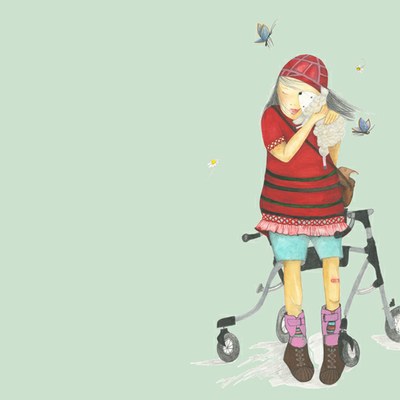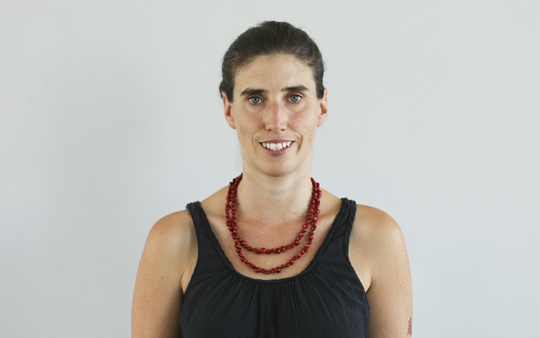Paula and the Magic Shoes
Freiburg, Nov 23, 2017
Becoming a writer was never her dream. “I’ll never go it again,” admits Alexandra Haag. “I have no talent for German spelling and grammar.” But she wrote a children’s book anyway: Paula and the Magic Shoes. A picture book about physical disabilities.

The character Paula wears orthoses, needs a walker and is completely energized – she bolsters children struggling with the same condition. Illustration: Carolina Moreno
The Freiburg medical student Alexandra Haag wrote a book in order to assure full integration between people with and without a disability. And because in her earlier career as a trained physical therapist and special needs teacher for physical and motor development she has seen how books can give people strength when illness or a disability makes life difficult. Haag learned that, for instance, from Paul and his family whom she encountered in the children’s cancer ward. She made a lasting tribute to her former patient with Paula, the protagonist in her book. Many other encounters and observations have flowed into the book as well.
As light as peanuts
The six-year-old Paula weighed “peanuts” when she was born. Due to a tiny cerebral hemorrhage at birth, spasticity “lives” in her muscles now and she has to wear orthoses. They help her to place her feet on the ground while walking, but they bother her while crawling. Sometimes she is sad that her legs get tired so quickly and that she can’t keep up with the other kids. Paula has a twin brother, Pavo, who is only ten minutes older than she is. He doesn’t need walking assistance. Pavo has a skateboard; Paula has a walker. Sometimes they trade and she lets her sheep ride the skateboard. The walker acts as a soccer goal – and in pre-school it’s great for building a block tower higher and higher. Her friend Annika climbs up on the walker and Paula holds it. They are a team and each does what she does best.

Alexandra Haag wrote a book in order to assure full integration between people with and without a disability. Photo: Sandra Meyndt
The book’s foreword states that around 50,000 children in Germany are currently living with spasticity as a result of brain damage in early childhood. It is the leading cause of childhood physical disability. Haag noticed that there are a lot of books for children about cancer, but none about cerebral palsy – that’s the medical term for the condition. A real-life explanation for children and adults could help reduce ignorance and insecurities about it. Haag has Paula explain with child-like creativity, about the origins of spasticity, what it is and why she walks the way she does.
Don’t offer false consolation
Magically illustrated by the graphic designer Carolina Moreno, the two-page images provide insights into Paula’s daily life and the therapies she experiences. The book can be used to relate to specific situations. To prepare their children for a physical therapy visit, parents can read the respective chapter. The parents can benefit from the book as well: Paula’s parents are smart not to offer their daughter false consolation when she is unhappy about her limitations. “I can really understand how you feel,” says the mother without letting Paula get her way by using her disability as an excuse for not having to clean up.
Alexandra Haag received the special award for student involvement from the University of Freiburg this year for her book that, along with providing background information, also contains practical ideas for inclusive groups. The author emphasizes that a lot of people contributed to making the book possible. Friends and roommates were brought on board for illustrations, layout and editing. Psychologists, educators, doctors, patients and their relatives in the physical therapy ward at the Children’s Hospital in Freiburg were interviewed and their ideas were integrated into the story. The Hans Böckler Foundation and the Department of Neuropediatrics at the University Medical Center helped fund the project. Alexandra Haag found people to help her with the parts that she herself could not do.
Anita Rüffer

